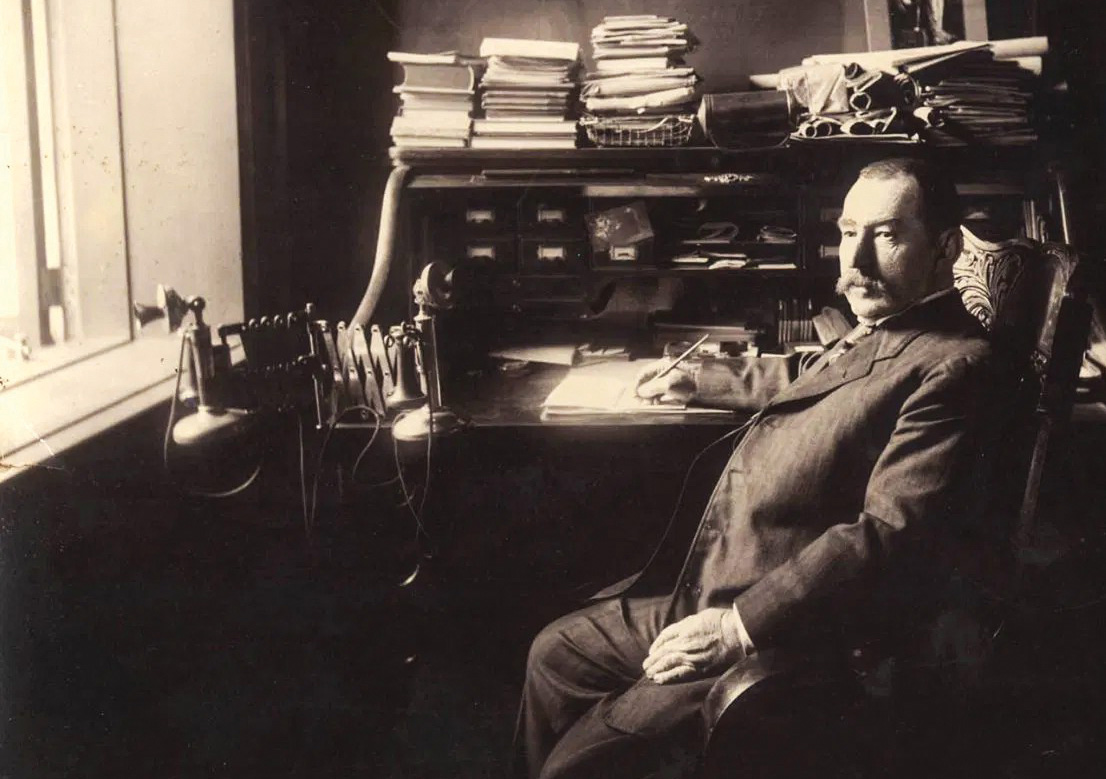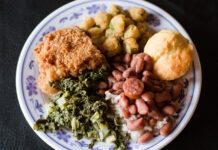
Pat Lyons, for whom Lyons Park was named, served as Mobile’s mayor three times and was certainly one of our most popular. Children on the street came to call him Papa. He was also a completely self-made man.
In 1845, a potato blight struck Ireland which led to widespread starvation and disease. The following year, a mass immigration began to the United States. That island’s population, which had stood at 8.5 million at the start of the famine, would ultimately drop to just 4.4 million by the dawn of the 20th century.
A good number of these transplants arrived in Mobile and settled in what had been an orange orchard during Spanish rule. The area was dubbed Orange Grove and held countless simple shotguns housing the new Mobilians, many of whom worked nearby on the busy waterfront or in the railyards.
In 1866, St. Patrick’s Catholic Church was built on Beauregard Street, and named to honor Ireland’s patron saint. Many years later the Friendly Sons of St. Patrick would be formed within its walls.
Thomas Lyons was among the Irish-born residents there. He and his wife Joanna had arrived in Mobile in December of 1849 and their son Patrick was born just a few weeks later. The family lived on the northwest corner of Beauregard and Lawrence streets. Thomas’ occupation in city directories was given as “laborer.”
An Orphan at 10
Both parents had died by 1860, and 10-year old Pat left school to support his younger brother and sister. There were no child labor laws in those days, and Pat worked as a “roustabout” in a Royal Street bar room and later as a messenger boy in a cotton factor’s office. At the age of 13, he signed on as a deck hand aboard a riverboat.
Pat’s hard work and personality caught the attention of Owen Finnegan, another Irishman who owned the steamer Maggie F. Burke. He was promoted to clerk, riverboat pilot, and eventually captain earning him that title for the rest of his life. He would eventually own several vessels.
In 1882, he used his savings to form a partnership with John E. Michael in a wholesale grocery and produce company on Commerce Street. As the years passed, he became involved in numerous other ventures. He was a partner with river man John Quill in the Southern Supply Co. supplying railroads and sawmills. He was a vice president of the Union Iron Works and treasurer of Consumer’s Ice Co.
As if that was not enough, he also had various other business interests, owning part of a local telephone exchange, a brewery and a banana importing firm.
From Businessman to Politician
Lyons was elected to the city council in 1897, promoting himself as a man of the people. He was mayor by 1903 and tackled a $2 million (roughly $72 million today) city debt dating back to reconstruction. He worked with local banker Edward J. Buck to lobby the legislature and successfully retired the debt by a refunding act. His work prevented the city from financial collapse.
During his terms as mayor, he improved municipal services, installing water and sewer lines, improving drainage, paving streets and installing modern lighting and formed a municipally owned water supply completed in 1907. He built new police and fire stations and under his leadership the city bought its first motorized fire truck in 1914.
The property which held the former Stein Reservoir on Spring Hill Avenue at Catherine Street was developed into a public park with a playground overseen by a paid supervisor. The name of that park still honors Lyons today. Lyons also made improvements in Washington Square and planted the first azaleas in Bienville Square as part of a beautification project.
Pat Lyons never forgot his childhood as an orphan and covered the annual expenses for Christmas trees to be placed in the city’s orphanages. The annual day of entertainment for orphans at Monroe Park was also his treat.
Given these acts of generosity, it is not surprising that Lyons was one of Mobile’s most beloved mayors. In 1910, the Mobile Register explained his popularity describing “his unfailing good temper, generous disposition and freedom from ostentation.”
While he never married, he had an active social life as a member of both the Manassas and Athelstan clubs and the Knights of Columbus. He also served on the board of the Mobile Carnival Association. And while he lived in a handsome home at 300 State Street with his unmarried siblings, they were lifelong members of St. Patrick’s in the neighborhood where they were born.
A Bank and His Health Topple
Lyons sold out of his business interests to become a major stockholder in the City Bank and Trust Co., where he served as vice president. That bank was heavily invested in Belgian securities which were considered “gilt edged” at the time they were purchased. When the Germans invaded that country in World War I their value collapsed and in 1915, the bank failed and was taken over by the First National Bank.
Captain Pat Lyons never fully recovered from his financial downturn and it effected his health. He died on September 2, 1921, and after his well-attended funeral at St. Patrick’s Church, he was laid to rest in Catholic Cemetery.
The City of Mobile under his leadership grew with its focus expanded from cotton exports to manufacturing, shipping and commerce. Pat Lyons successfully brought Mobile into the 20th century and did it with all his heart.






